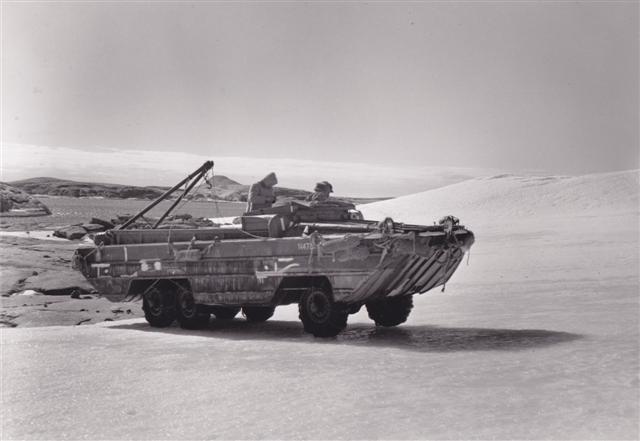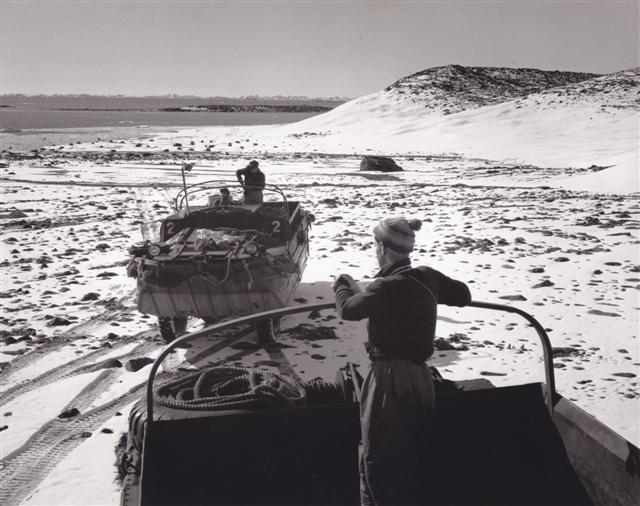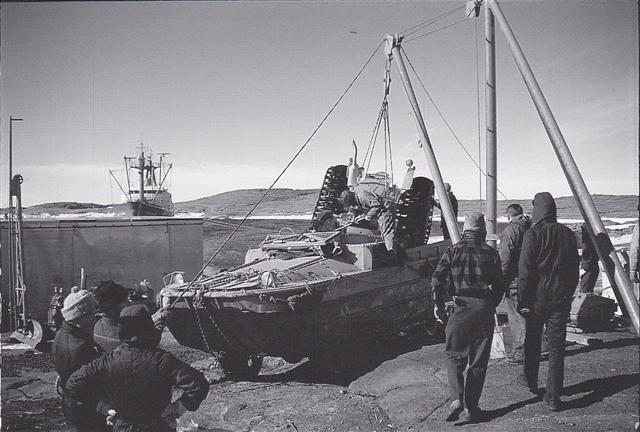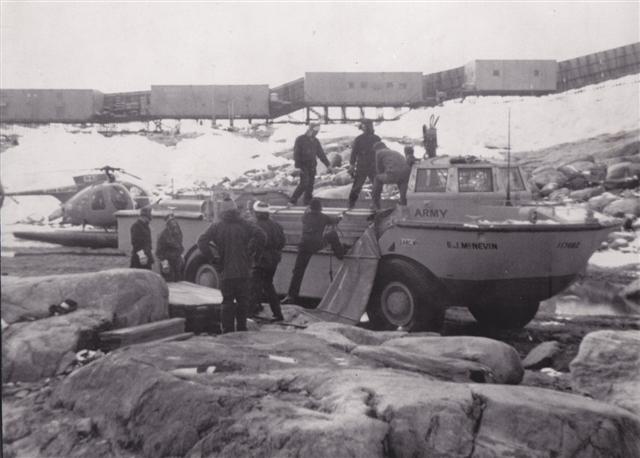Amphibians in the Antarctic

Early Operation
Mawson 1955
Amphibians made a radical difference to unloading times, loading at ship's side and deliving to a land site without the multiple handling of lighterage.
The DUKWs working in pairs helped each other out of difficulties. Working on blue ice, wearing chains, wheel covers removed to avoid ice buildup, an A Frame allowed unloadin g of another DUKW by use of the winch.
Ship Unloading
Mawson February 1969
Demonstrating the high work rate which had made them so productive in World War 2, they were able to get ships turned around on schedule even in poor weather.
They were unloaded by a permanent crane in the Market Square at Mawson; where such luxuries were unavailable, the A-Frame attachment was used.
New generation LARC 5
Casey February 1973
The DUKWs were ageing and difficult to maintain, but remained sentimental favourites.
Although the DUKW's land ability was better, this was not a significant factor over the short distances involved, the LARC's high payload and hydraulically operated crane sealing the argument. After a trial in 1970 involving both vehicles, the LARC became standard.
Amphibians in the Antarctic




